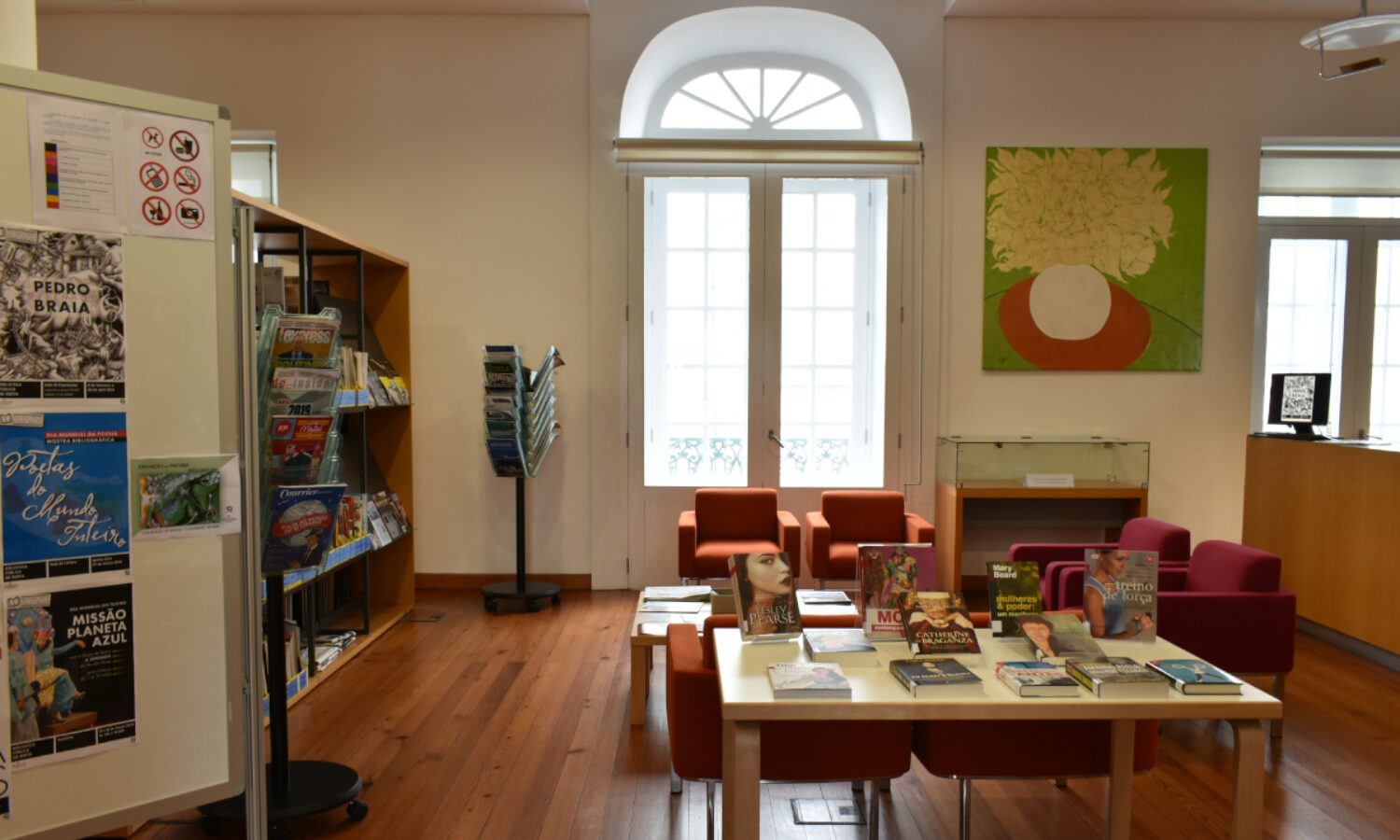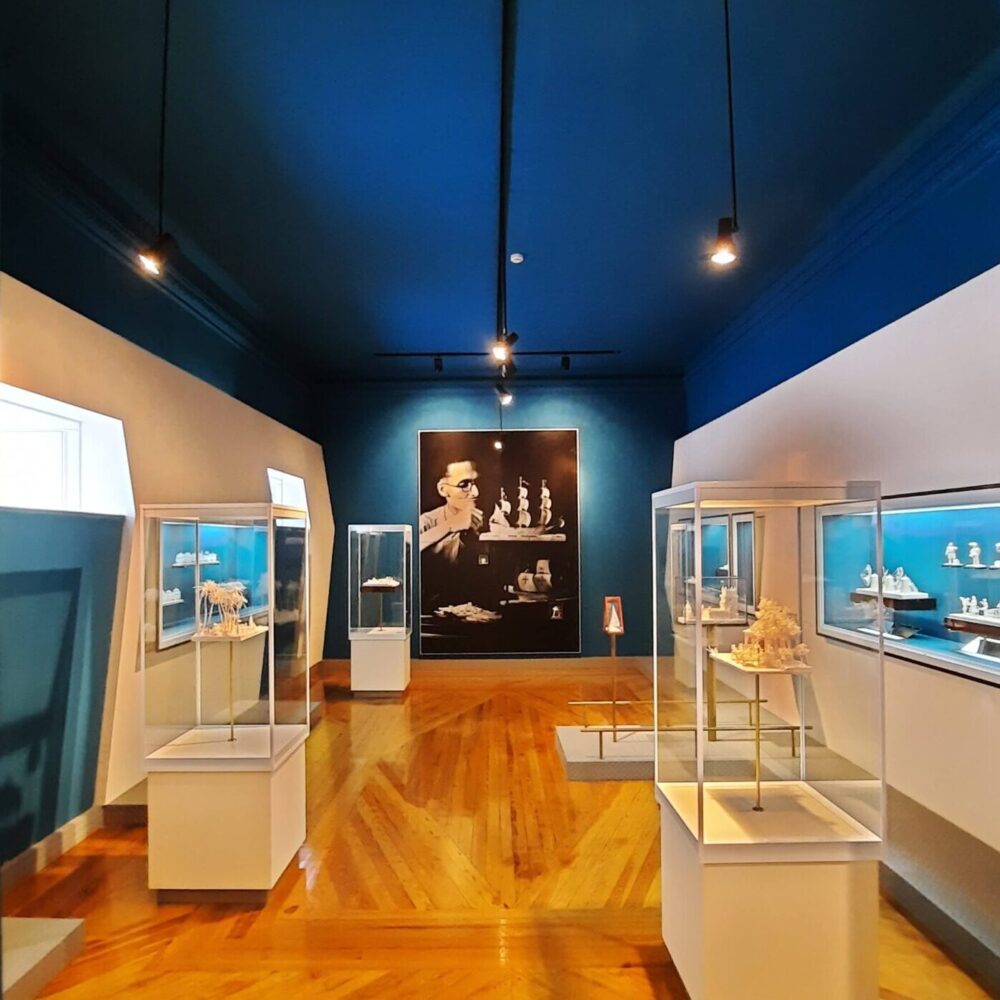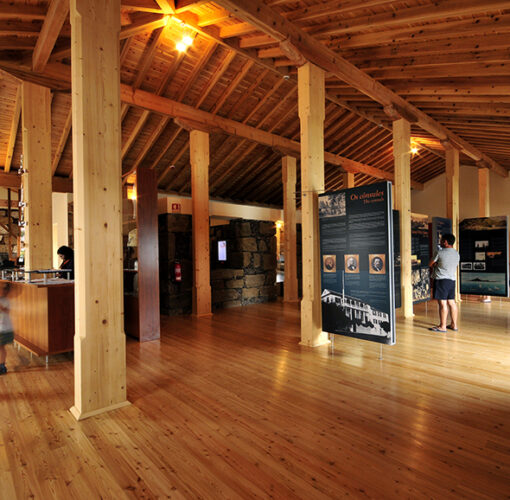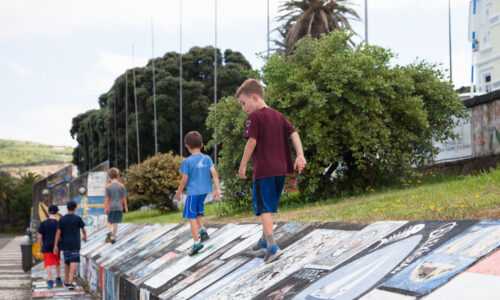Museums and Cultural Centers
Knowledge and fun
Faial has a rich and interesting history, geography, and culture that can be discovered in several museums and cultural centers on the island.
Find out below the characteristics of each one and be sure to set aside time on your trip to visit them!
©Siaram

Fábrica da Baleia de Porto Pim
Part of the Faial Natural Park, this is an industrial complex located in the southwestern part of Porto Pim Bay on Monte da Guia slope. The whaling station was built during the 1940s and remains one of the best preserved examples of the extinct Azorean whaling industry. A visit is essential to understand the historical, economic, and social aspects of this activity. The permanent exhibition at the Porto Pim whaling station features practically all of the original machinery and explains how sperm whales were processed to obtain commercial by-products. It also includes a vast collection of memorabilia from the intense whaling activity that took place in Faial in the twentieth century.
The museum is open to the public and the Azores Sea Observatory (OMA) organizes guided tours. There is also a shop with local crafts and other products related to the sea.
Fábrica da Baleia also has a diverse cultural program throughout the year with educational activities, temporary exhibitions, and fairs, among other things.
©AirLuso

Horta Museum
Horta Museum is made up of a heterogeneous set of collections that span a chronological period stretching from the 16th century to the present day. The exhibits include ethnographic objects, tools and devices linked to ancient crafts and traditional agricultural, linen, wool and ceramic technologies; technology related to the history of Porto da Horta, such as the submarine cable stations which made the island the nerve center of communications in the North Atlantic during the 19th and 20th centuries; religious art; visual arts; photographic documents; printed and handwritten documents; and examples of natural history.
In addition to the collection described above, the permanent exhibition includes a truly unique collection of ethnographic works produced on fig tree kernels.
The museum is housed in the former Colégio dos Jesuitas, a 17th-century building attached to the main church of Faial and classified as a Regional Monument.
©AirLuso

Capelinhos Volcano Interpretation Center
This is the most popular environmental visitor center in the Azores. It is informative, educational, and scientific with a set of exhibitions that focus in particular on volcanology, addressing the eruption of the Capelinhos Volcano, the formation of the Azores archipelago, and the various types of volcanic activity around the world. There is also an exhibition on the richness and architectural diversity of Azorean lighthouses, and a large collection of rocks and minerals.
It was nominated by the European Museum Forum for “Best Museum in Europe” in 2012.
The building is buried so as not to interfere with the pre-existing landscape, allowing you to enjoy this recent volcanic landscape (the eruption occurred in 1957/58). Besides a set of exhibitions, the Center has an auditorium and a café. At the end of the visit, take the opportunity to climb the spiral staircase to the top of the lighthouse. From the top you can enjoy a unique view of the entire area surrounding the volcano.
©Rê Schermann

Manuel de Arriaga’s House
Manuel de Arriaga was elected the first President of the Portuguese Republic on 24 August 1911.
“Manuel de Arriaga’s House is an 18th-century building, where the first president of the Republic was born and spent most of his youth.”
In addition to preserving the memory of this native of Faial and his time, this cultural space projects the substance of the ideals and republican values which lend themselves to a modern reflection and encouragement of civic participation.
©Rê Schermann

Teatro Faialense (Performance Art Theatre)
Inaugurated in 1856, Teatro União Faialense was the first regular theater in the Azores. Rebuilt in 1916, following the trends of the time, with elements of art deco, it was then renamed Teatro Fayalense. After being closed for a few years in the late 1990s, it underwent major restoration and expansion works and reopened in 2003.
Consisting of a set of amenities––a movie theater, auditorium, and bar––the theater offers a diverse cultural program of film screenings and festivals, theater, musical and dance performances, lectures and debates, as well as courses, classes, and workshops.
Of note is the painting on the ceiling of the main auditorium by José Nuno da Câmara Pereira, which enhances the beauty and harmony of the theater itself.
©Peter Café Sport

Scrimshaw Museum
This museum houses the largest private Scrimshaw collection in the world, composed of whale and sperm whale teeth carved and engraved with a wide variety of motifs by the skilled hands of whalers and other artists from the island. The museum also contains a huge range of utilitarian and decorative pieces made of ivory and sperm whale bone, besides an admirable collection of photographs, manuscripts, maps, books, and other documents related to whaling and navigation.
What is scrimshaw? Born aboard New England whaling ships as a way for sailors to occupy their time during long ocean crossings, this form of craftsmanship developed through a process of engraving and carving on whalebone and tooth, usually made as souvenirs for family members.
©Siaram

Dabney House
This is a small museum depicting the history of the Dabney family and the period they lived in. The Dabney family settled on the island in 1806 when John Dabney was appointed US Consul General to the Azores. The position was held successively by other descendants in close connection with their business activities as large vineyard owners, ship-owners, and merchants.
This property in Porto Pim was acquired by this family in 1854 and consisted of a summer house that included a dock and shelter for boats and a winery.
Wine cellars and greenhouses abounded in 18th-century Horta. They were used to store wine (mostly produced on properties on Pico) and the equipment used for the fortification process. These wines were shipped from Horta to the world and became known as “Faial wine”. The collapse of the wine business led to the end of an era. The industry was supplanted by whaling, which resulted in the disappearance of the wineries and greenhouses. The Dabney exhibition is on display on the site of this surviving winery.
©Biblioteca da Horta

Horta Library (João José da Graça Public Library and Regional Archive)
Horta Library is a dynamic space with a wide range of cultural facilities. Besides the 2 libraries and reading rooms––adult and children/youth––the library has 2 exhibition rooms which house a variety of visual arts objects and historical and literary works, an auditorium with a variety of cultural programming (such as film screenings and festivals, lectures, workshops, and other presentations), a room for classes and workshops in various cultural languages, and a small store with products connected to Azorean culture and history.
For those who visit Faial in the aim of finding out more about their family tree, this is a must-visit place. In the extensive Regional Archive (which covers the islands of Faial, Pico, Flores, and Corvo), you can find registers of births and deaths, and other information about your ancestors. There is also a team of professionals that can help you with your research.
©Siaram

Aquário de Porto Pim – Live Fish Station (closed temporarily)
The Live Fish Station – Porto Pim Aquarium includes a central tank and two further sets of tanks containing the most common coastal species in the Azores, an exhibition about the Azores Marine Park, and a film about the continental shelf adjoining the archipelago.
The Aquarium is housed in a building full of history about codfish drying and the first whale oil extraction factory.
Promoting greater knowledge about the biodiversity in the waters around the Azores, along with environmental awareness and recovery of threatened marine animals, are the main missions that the Natural Park of Faial carries out in these facilities.
©Mash

Sacred Art Museum
Located in the Church of Nossa Senhora do Carmo, this is an exhibition space dedicated to displaying permanent and temporary exhibitions of sacred art from the Azores and, more specifically, the religious heritage of Faial. The museum’s permanent exhibition comprises pieces from the Diocese of Angra, the Third Order of Carmo, the Third Order of São Francisco, and the Church of the Santíssimo Salvador, many of which are from the extinct Museum of Sacred Art and Religious Ethnography of Horta.














